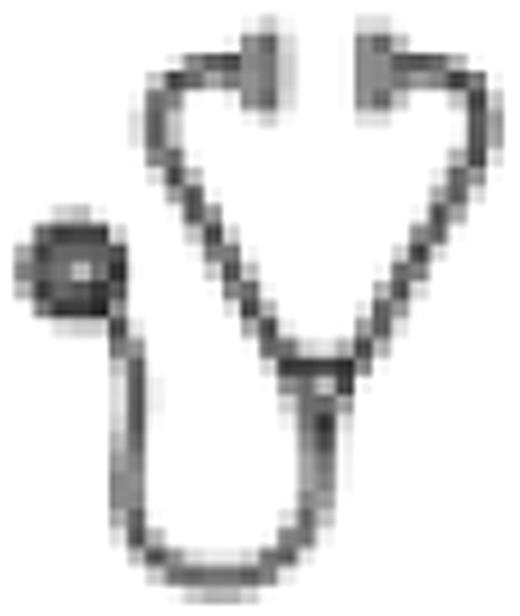Abstract
According to the WHO 2008, acute erythroid leukemia (AEL) is defined by erythroid hyperplasia ≥50% and ≥20% of myeloblasts of non-erythroid cells but <20% of all nucleated cells. “Pure AEL” is defined by ≥80% of erythropoiesis without relevant myeloblasts. Cases with erythroid hyperplasia ≥50% and ≥20% of myeloblasts of all nucleated cells are classified as acute myeloid leukemia (AML-MRC/NOS), while presence of <20% of myeloblasts of non-erythroid cells assigns cases to myelodysplastic syndrome (MDS). As the separation of MDS/AML with erythroid hyperplasia in different categories is still under debate, we studied 225 patients with MDS/AML and ≥50% erythroid cells in bone marrow (BM) for cytomorphology, cyto-/molecular genetics, and prognosis.
The cohort consisted of 225 pts (f/78; m/147; median age, 68.8 yrs; 18.5–88.4 yrs) with BM erythroid hyperplasia (≥50%) and different myeloid subtypes strictly defined according to WHO 2008: MDS: n=107; AML-MRC/NOS: n=32; AEL: n=79, pure AEL: n=7 (the WHO cohort “AML with recurrent genetic abnormalities” was excluded). All pts were investigated by MGG staining of BM and chromosome banding/FISH. In addition, we performed analysis for the NPM1 mutations (n=126 investigated), FLT3-ITD (n=135), MLL-PTD (n=136), and NRAS mutations (n=90).
MDS subtypes were as follows: RA: n=18; RARS: n=18; RCMD: n=21; RCMD-RS (WHO 2001): n=26; RAEB-1: n=22; RAEB-2: n=2. Most AML pts were categorized as “AML with myelodysplasia related changes; AML-MRC” (27/30 cases; 90%); 3 pts were classified as “AML, not otherwise specified; AML-NOS”, 2 pts were not evaluable for this aspect. We first compared the MDS cohort (n=107) with the AML cohort (all 118 pts with AML-MRC/NOS, AEL, and pure AEL): Overall survival (OS) was better in MDS than in the AML cohort (median: not reached vs. 13.9 months; p<0.001). In contrast, OS showed no significant differences across the AML-NOS/MRC, AEL, and pure AEL subgroups (9.3 vs. 13.9 vs. 6.1 months; n.s.). In the total cohort, aberrant karyotypes (KTs) were detected in 105/225 pts (46.7%) and were associated with inferior median OS when compared to normal KTs (aberrant KTs: 12.5 months vs. normal KTs: not reached; p<0.001). Aberrant KTs were more frequent in the AML categories when compared to MDS (69/118; 58.5%; vs. 36/107; 33.6%; p<0.001), but showed no significant differences across the different AML subgroups: AML-MRC/NOS: 20/32; 62.5%; AEL: 44/79; 55.7%; pure AEL: 5/7; 71.4%; n.s.). Performing cytogenetic risk categorization according to revised MRC criteria (Grimwade, 2010) for the whole cohort, unfavorable KTs showed an inferior prognosis compared to intermediate KTs (unfav. KTs: 65/225; 28.9%; median OS: 7.6 months; vs. intermed. KTs: 160/225; 71.1%; not reached; p<0.001). The pts from the AML cohort more frequently had unfav. KTs than those with MDS (AML cohort: 50/118; 42.4% vs. MDS: 15/107; 14.0%; p<0.001). Unfav. KTs were similarly distributed in the AML cohort (AML-MRC/NOS: 14/32; 43.8%; AEL: 32/79; 40.5%; pure AEL: 4/7; 57.1). Regarding the molecular markers, we detected the NPM1mut in 25/126 investigated (19.8%; MDS: 0/43; AML cohort: 22/91; 24.2%), FLT3-ITD in 5/135 (3.7%; MDS: 0/43; AML cohort: 5/92; 5.4%), MLL-PTD in 12/136 (8.8%; MDS: 2/44; 4.5%; AML: 10/92; 10.9%), and NRASmut in 4/90 (4.4%; MDS: 1/42; 2.4%; AML: 3/48; 6.2%). Mutation frequencies did not differ significantly in the MDS vs. AML categories or across the AML-MRC/NOS, AEL, and pure AEL subgroups.
MDS with erythroid hyperplasia (≥50%) was clearly separated from the AML cohort (consisting of AML-MRC/NOS, AEL, and pure AEL, all with ≥50% of erythropoiesis) by less adverse cytogenetics and by improved survival. In contrast, no significant differences were observed across the different acute leukemia subentities regarding prognosis and cyto-/molecular genetic features. These data support the separation of MDS and AML with ≥50% of erythroid precursors according to the WHO classification. However, with respect to different AML subgroups, the separation to AEL, pure AEL, and AML-MRC/-NOS having ≥50% erythropoiesis seems arbitrary: these AML subtypes show no significant differences regarding prognosis or genetic risk profiles. This argues in favor of a combined group of AML with erythroid hyperplasia aiming to facilitate the definition for clinical studies and the development of therapeutic strategies.
Haferlach:MLL Munich Leukemia Laboratory: Employment, Equity Ownership, Research Funding. Schnittger:MLL Munich Leukemia Laboratory: Employment, Equity Ownership. Kern:MLL Munich Leukemia Laboratory: Employment, Equity Ownership. Haferlach:MLL Munich Leukemia Laboratory: Employment, Equity Ownership.

This icon denotes an abstract that is clinically relevant.
Author notes
Asterisk with author names denotes non-ASH members.

This feature is available to Subscribers Only
Sign In or Create an Account Close Modal